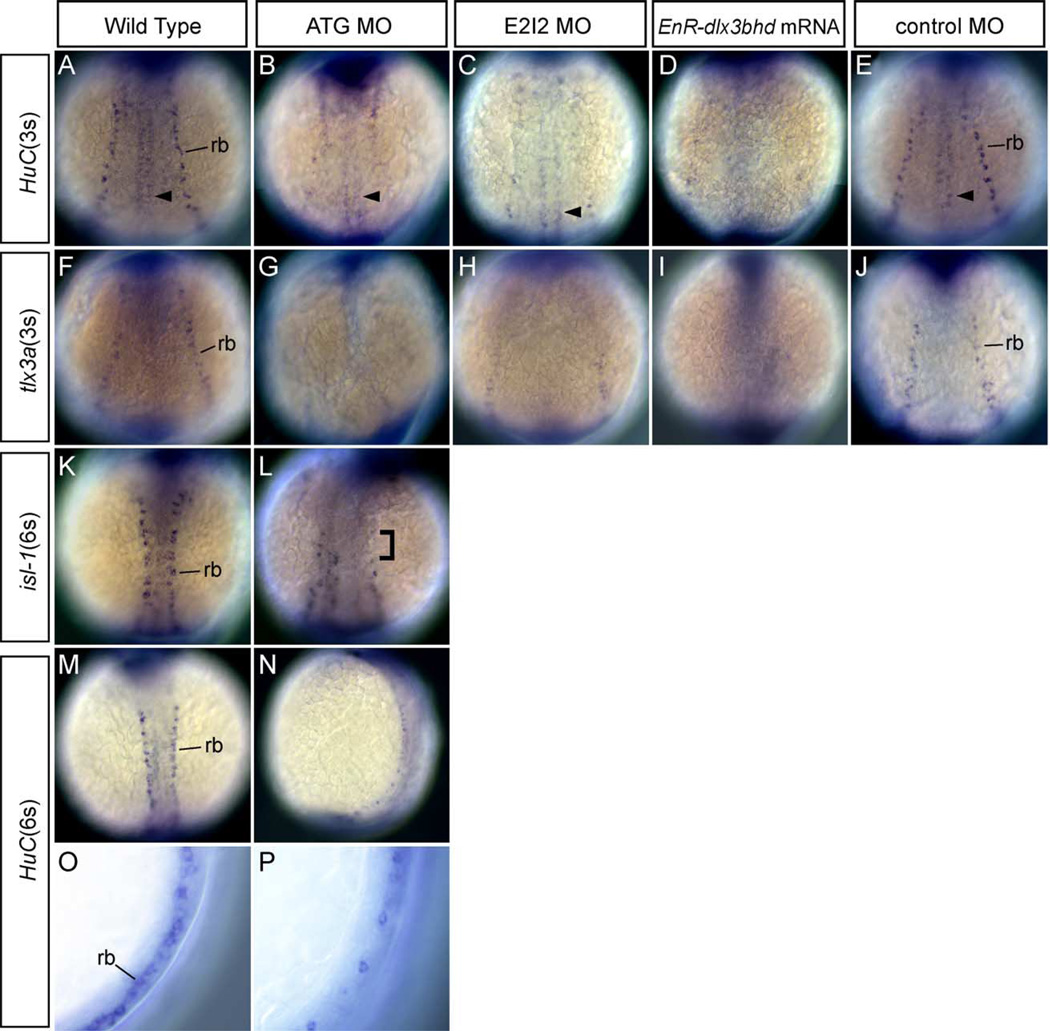Fig. 2.
Phenotypes of Rohon-Beard (RB) sensory neurons in MOs and EnR-dlx3bhd mRNA injected embryos at 3- and 6-somite stage. (A–J) Embryos at 3-somite stage. Dorsal views, anterior is to the top. (K–P) Embryos at 6-somite stage. (A, F, K, M, O) Wild-type embryos. (B, G, L, N, P) 20 ng ATG-dlx3b-MO/20 ng ATG-dlx4b-MO-injected embryos. (C and H) 20 ng E2I2-dlx3b-MO/20 ng E2I2-dlx4b-MO-injected embryos. (D and I) One hundred fifty-picogram EnR-dlx3bhd mRNA-injected embryos. (E and J) Forty-nanogram control MO-injected embryos. (A–E, M–P) Expression of HuC. (F–J) Expression of tlx3a. (K and L) Expression of isl-1. (O) High magnification lateral view of a wild-type embryo. (P) High magnification lateral view of (N). In (A), RB neurons (rb) and primary motor neurons (arrowhead) are seen. After injection of dlx3b and dlx4b-MOs or EnR-dlx3bhd mRNA (B–D), primary motor neurons are present, but RB neurons are highly reduced or absent, as seen by the expression of HuC. A control MO injected at the same concentration in (E) has normal RB neurons. In (G–I), RB neurons are highly reduced or absent after injection of dlx3b and dlx4b-MOs or EnR-dlx3bhd mRNA, observed with tlx3a expression. In a control MO injected at the same concentration in (J), no changes are observed. In embryos allowed to develop until the 6-somite stage (L and N), RB neurons continue to show a reduction after injection of dlx3b and dlx4b-MOs. The bracket in (L) shows the region of no RB neurons. In a higher magnification view (O and P), it is easily recognized that RB neurons are highly reduced in MO-injected embryos observed at 6-somite stage.

